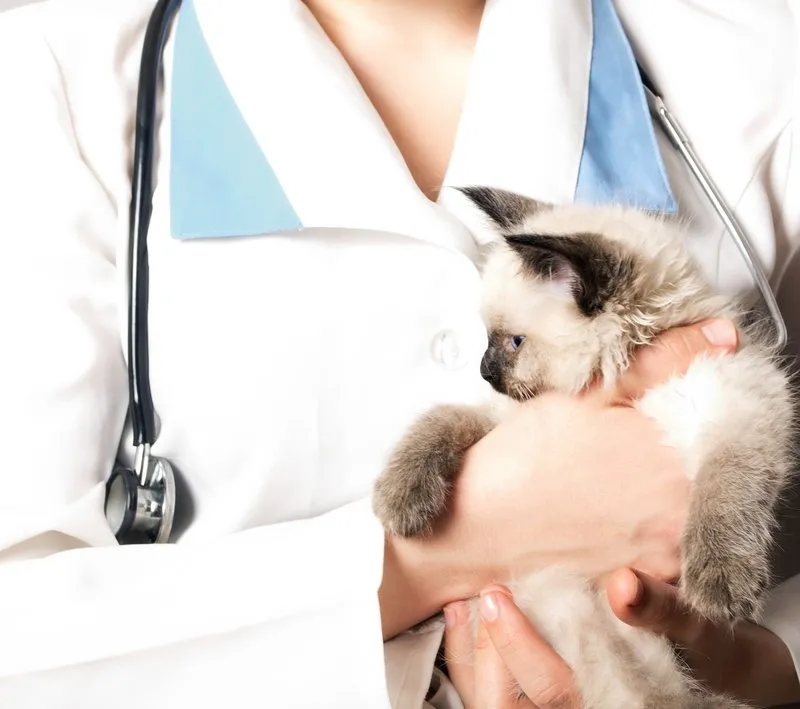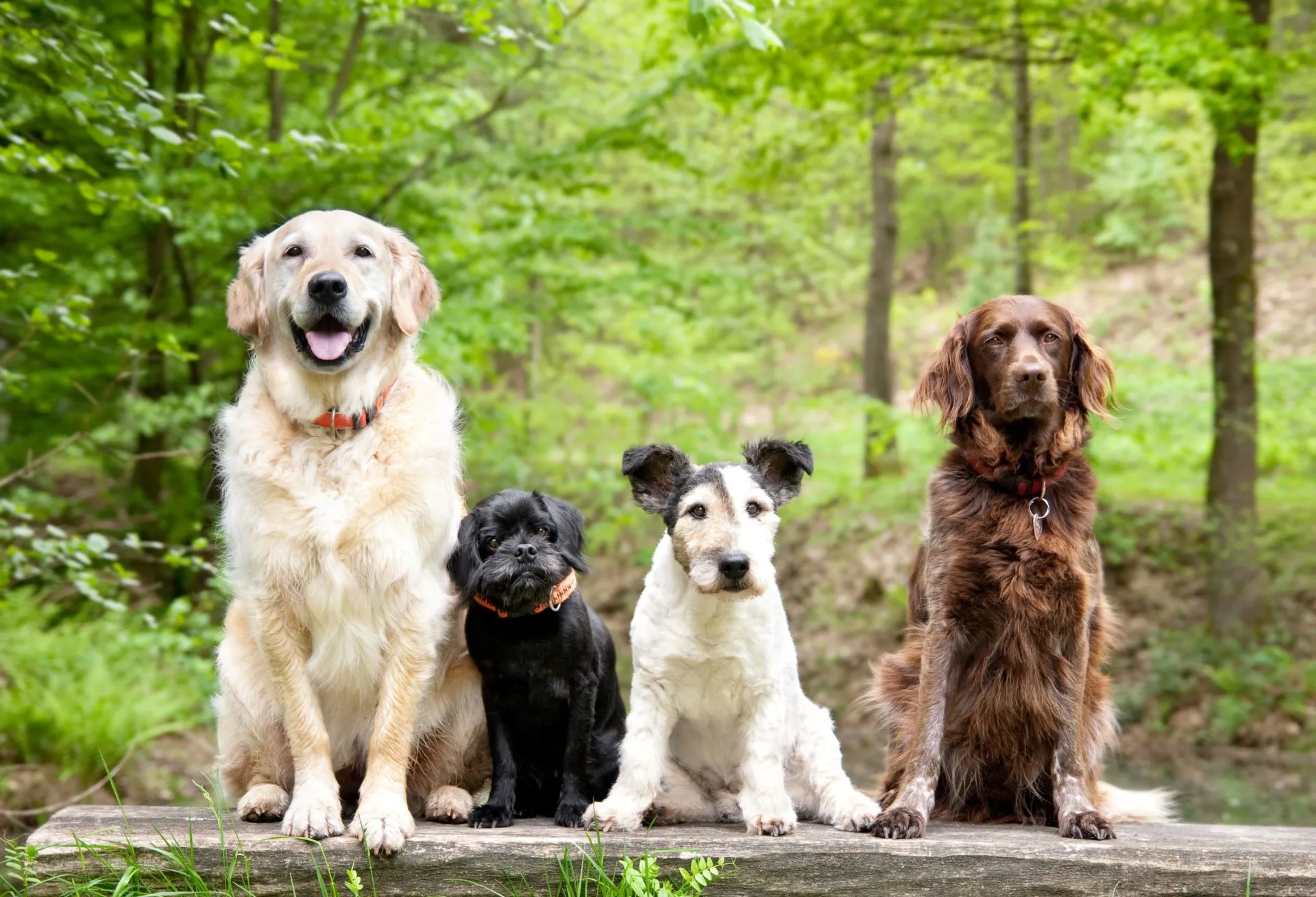November is Adopt A Senior Pet Month! If you’re considering bringing a new pup into your family, you may want to consider getting an older canine. A local Roanoke, VA vet goes over some of the ins and outs of adopting a senior pooch below.
Benefits
Older dogs have some wonderful benefits that make them really great pets. They’re usually very sweet and calm, and are more interested in cuddles and naps than in digging up your flowerbeds or chasing the neighbor’s cat around. Fido will already have been trained, and he won’t surprise you by growing to three times the size you expected. Plus, older dogs are extremely cute. Those soulful eyes can definitely melt hearts!
Preparations
Petproofing is important when adopting any dog, but it will look slightly different when you’re adopting a senior. You’ll still need to be careful to keep things like toxic plants and small or sharp objects away from Fido. However, older dogs are generally past their chew-everything-in-sight stages. The focus here is really on comfort. Set out carpet runners to provide traction, and invest in a few good orthopedic beds. Use gates or grates before potential hazards like fireplaces or pools.
Coming Home
Going to a new home is a huge deal for Fido. It may take your canine friend some time to settle in and really feel safe. Plus, many older dogs are struggling with trauma or depression after being separated from or, sadly, abandoned by their former owner. Give him the time he needs. Treats will go a long way towards bonding and building trust. Use small ones, so you don’t overfeed your pet.
Veterinary Care
Most likely, Fido will already have been fixed. (This is another perk of getting an older dog.) Shelters also typically perform basic evaluations. However, your canine pal will definitely benefit from a full nose-to-tail exam, as well as any recommended screenings and panels. Schedule a veterinary appointment right away. Looking to learn more about canine health issues? Explore our article on “The Mysterious Dog Disease: Key Facts” to stay informed about potential health concerns affecting your furry companion.
Research
Doggy DNA tests are proving to be very helpful, especially for people who are adopting mutts. Most senior dogs that are up for adoption are mixed breeds. It’s worth your while to find out exactly what your pup is. This can be very helpful for your pet’s care needs, as you’ll be able to find out if he is at elevated risk of any specific conditions. Ask your vet for more information.
Our Advice on Caring for a Hairless Cat in 2024
What are some breeds of hairless cats?
Hairless cats, known for their distinct appearance and affectionate nature, include several breeds. The most recognized Sphynx is celebrated for its lack of coat and friendly demeanor. The Donskoy, or Russian Hairless, shares these traits but has a different genetic root for its baldness. Other notable breeds are the Bambino, a blend of Sphynx and Munchkin characteristics; the Ukrainian Levkoy, known for its unique ear fold; and the Peterbald, which boasts a slim build and soft, hairless skin. Each breed offers a unique combination of personality and physical traits, making them fascinating companions for those who appreciate their unconventional beauty.
What type of shampoo should be used for bathing a hairless cat?
For bathing a hairless cat, it’s essential to use a gentle shampoo designed specifically for their unique skin needs. An unscented, medicated shampoo formulated for cats is the best choice. These shampoos help manage the skin’s oiliness without causing dryness or irritation. Since hairless cats lack fur, which usually absorbs oils, their skin can become greasy. A proper feline-medicated shampoo will cleanse effectively while maintaining the skin’s natural moisture balance, preventing issues like sticky residues or itchiness. Always ensure the product is safe for cats to avoid any harmful reactions.
Besides bathing, what other grooming care do hairless cats require?
Besides regular bathing, hairless cats require additional grooming to maintain their health and comfort. Their ears need frequent cleaning because they lack hair that usually protects against dust and debris, leading to wax buildup. Nail clipping is also essential, as their nails can overgrow more noticeably without fur. Additionally, care for their eyes is crucial, as they can accumulate more discharge due to the absence of eyelashes. Using vet-recommended products may be necessary to moisturize their skin to prevent dryness or irritation. These grooming steps are vital to keeping a hairless cat happy and healthy.
What are some considerations for keeping a hairless cat cool and hydrated during summer?
To keep a hairless cat cool and hydrated during summer, ensure continuous access to fresh water. Consider adding ice cubes to their water bowl for extra cooling. Provide a cool, shaded resting area away from direct sunlight, and incorporate cooling mats or tiles where they can lie down. Avoid excessive outdoor exposure during peak sun hours. A well-ventilated environment with fans or air conditioning helps prevent overheating. Regularly monitor for signs of dehydration or heat stress. Additionally, applying a vet-approved sunscreen to their skin can protect against sunburn, as their lack of fur makes them particularly susceptible to UV rays.
Why are hairless cats considered affectionate and lovable?
Hairless cats are considered affectionate and lovable due to their strong bonds with their human companions. They are known for their warm, engaging personalities and desire constant interaction and attention. Lacking fur, they often seek warmth by cuddling with their owners, enhancing their reputation for being friendly and affectionate pets. Their expressive nature and dependency on humans for warmth and comfort contribute to their lovable demeanor. Additionally, their unique appearance and playful behavior endear them to many, making them cherished family members.
Do you have questions about your pet’s health or care? Contact us, your local Roanoke, VA animal clinic, today!
For thorough pet health assessments and diagnostic services, trust our experienced team at Veterinary Diagnostics. Our state-of-the-art facilities and skilled professionals ensure accurate diagnosis and personalized treatment plans for your beloved pets. Schedule an appointment with us for comprehensive veterinary care tailored to your pet’s needs.



